Producers
-
Description:
Sliabh Liag (pronounced "Sleave League") Distillers is the first distilling company in the county of Donegal for over 175 years, established with the purpose of reclaiming the distilling heritage of Donegal. Donegal is steeped in a history of legal and illicit distillation, and the Sliabh Liag peninsula and the parish of Glencolmcille were among the most prolific poitín producing areas in the County.Located on the Sliabh Liag peninsula, the distillery is surrounded by one of the world’s most striking landscapes populated by resilient people, steeped in folklore and with a legendary distilling heritage. An Dúlamán Gin and Whiskey distillery was established in 2017 just outside the village of Carrick, Co. Donegal, where the Abhainn Bhuí and Glen rivers flow into Teelin bay at the foot of Sliabh Liag. At the distillery’s core is their 500 litre hand-beaten copper still from Forsyths of Scotland. This is a working artisan distillery and everything is done on site including the hand-bottling. The new Ardara Distillery will make Irish whiskey in both Single Malt and iconic Pot Still variants, highly differentiated and reflecting the authentic style in which Donegal whiskey was made in the 19th century. Triple distilled, rich, smoky and peated, the whiskies will share in the folklore of the Donegal Gaeltacht. With construction on the Show Field in Ardara started, they hope that the distillery will be operational some time in 2021. The distillery buildings have been designed by CornerStone Architecture of Donegal and incorporate traditional shapes, forms and materials. The distillery will initially comprise the still house and barrel store. At the heart of both distilleries are James and Moira Doherty and James Keith. As the first barrels of whiskey are being produced and being laid to rest for aging James Doherty has sourced their Silkie Irish blend. Working closely with John Teeling and James Watt at Great Northern Distillery they have created a unique Irish Blended Whiskey deserving of the heritage and folklore of Donegal.
Folklore of the Silke
Sliabh Liag is found beyond Killybegs where people have historically battled both climate and hardship to fashion a living from an uncompromising landscape. Where the stories were told of the Silkie, or Selkie, seals: the legendary shape-shifters who shed their seal skins to come ashore as beautiful sea maidens or handsome men with enchanting voices, only to eventually return to the sea leaving broken hearts.Image: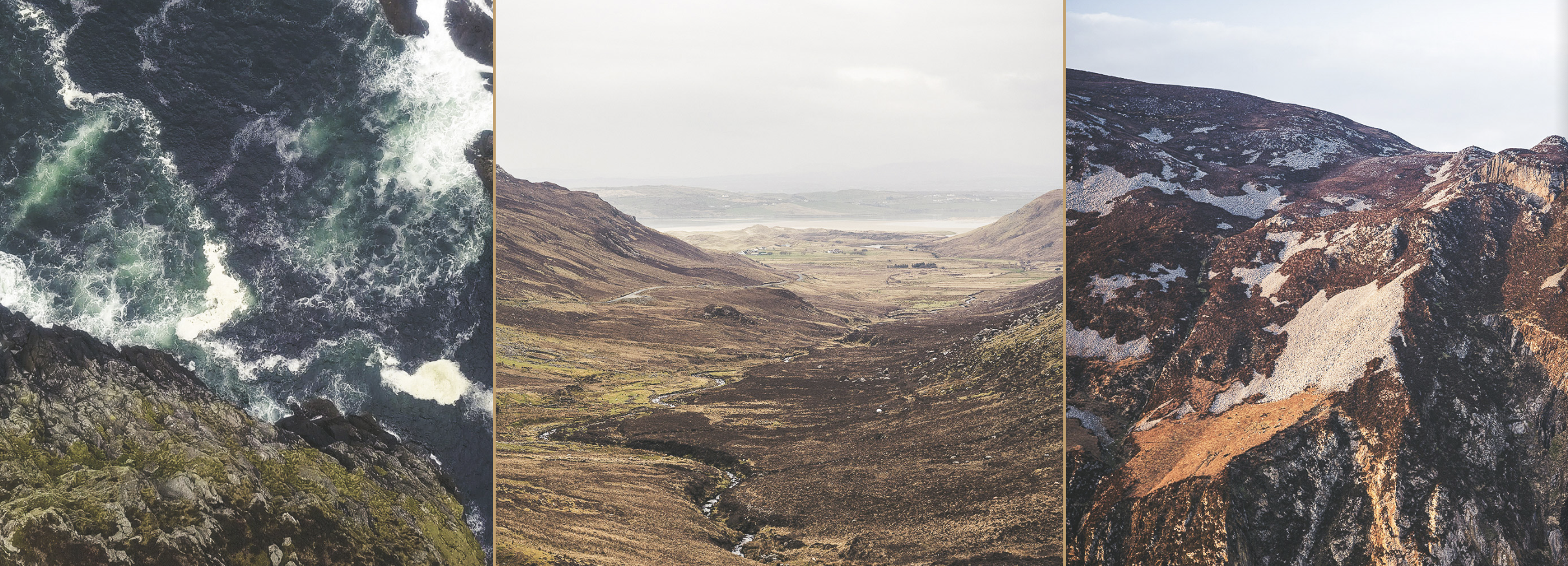 Region:
Region: -
Description:
In 2020, Alwin and Stef Jurtschitsch teamed up with three other certified organic growers in the Kamptal, Susi Hahn, Michael Gerbing, and Thomas Janka to make the first vintage of Sonnhof Social Club. The Jurtschitsch family had a long tradition of bottling liter and doppler (two liter) bottles and with the new partnership, the tradition is being revived. The growers are bonded together by their dedication to organic farming in the Kamptal. All of the grapes are harvested by hand and come from the four growers certified organic vineyards. The wine is made at the Jurtschitsch winery in stainless steel tanks with spontaneous fermentations.
The Sonnhof Social Club label is based off of an old traditional loop-style label of the Jurtschitsch family winery that used to be on the doppler bottles. Sonnhof is the old name of the domaine and is still found on the walls of the Jurtschitsch winery.
The one liter bottle is very strongly linked to Austrian wine culture. Sharing a liter bottle was a special time to bring friends and family together. According to Jurtschitsch, when “you put a liter bottle on the table, you had to finish it before it became warm. When wine became more prestigious and chichi it was not cool any more to serve this size of a bottle. But I like this tradition as it reflects the old school honest “grower wines”. Many of the grape growers who do not sell wine anymore still produce at least some small barrels for themselves and their families and friends and still bottle them in one liter. It is a wine made for drinking with family and friends.”
2019 was the first vintage made and in 2020, the Club expanded and the fruit will come from seven growers total, all organic of course. Less than 1,000 cases were made of the 2019 vintage.
Image: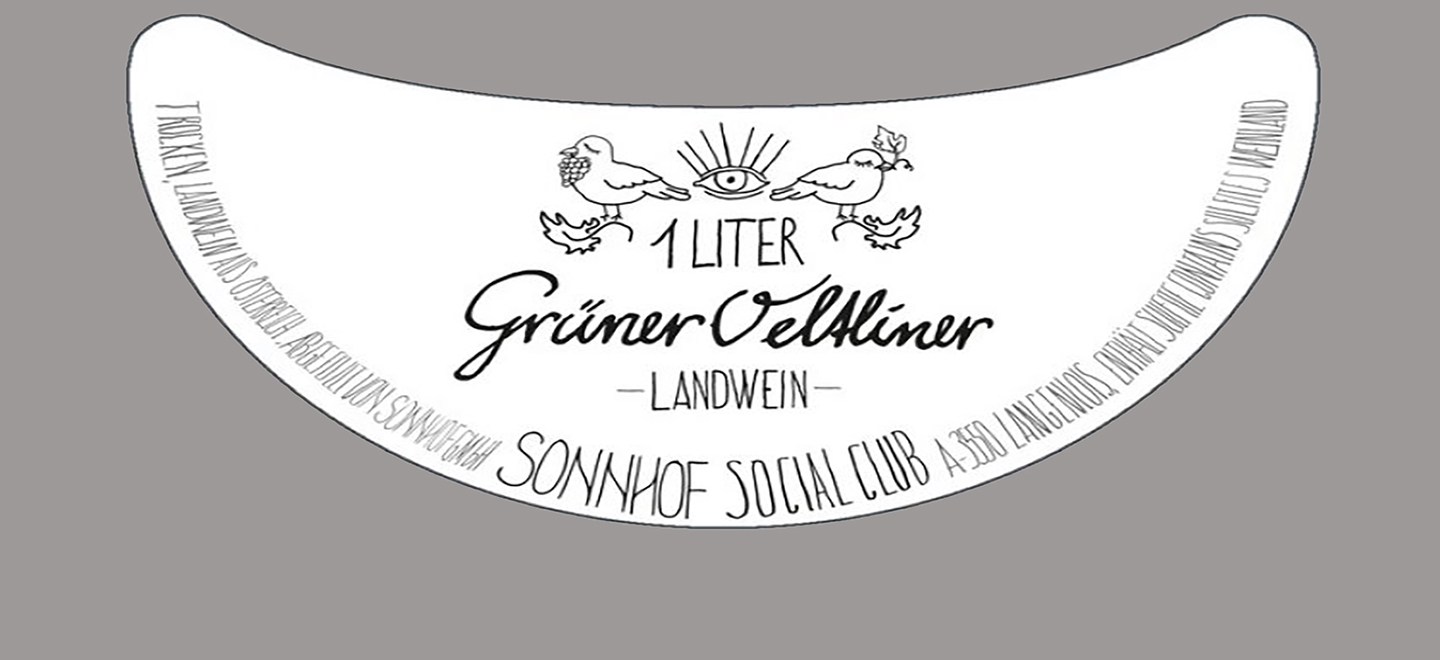 Region:
Region: -
Description:
Amélie and Charles Sparr are Alsatian through and through; both come from winegrowing families. The Sparr family has been in the region since 1634, making Charles the 12th generation. Pierre Sparr, a famous and respected negociant, was Charles's great grandfather and father. The company was sold in 2007 to a local co-op and the vineyards the family owned were split up among the cousins and Charles's uncle. Charles always knew that he wanted to be a winemaker and when he was 16 years-old, he saved up his money and bought his first vineyard. In 2010, Charles bought more vineyards from his family. Immediately, he converted everything to organic agriculture and in 2013, Charles, with his wife Amélie, launched their eponymous winery. They sold to négociants for a few years and started to bottle under the Domaine Amélie and Charles Sparr in the 2017 vintage. Amélie's family owns Vignobles des Deux Lunes, which has been organic since 1997 and biodynamic since 2003. Amélie and Charles’ winery is in Wettolsheim, just south of Colmar. They now own eighteen hectares coming from both sides of the family, in the heart of southern Alsace where the best vineyards are located. They are lucky to own eight hectares of Grand Cru, including Mambourg, which has been the Sparr family’s most prized vineyard for generations.
Amélie and Charles have imagined and created a new vision for what Alsatian wine can be. They experiment, dream, and push boundaries and in the process they are redefining what we can expect from Alsace. All of their farming is biodynamic, certified by Demeter as of the 2019 vintage. Most of their wines are classic in style, but they play around too. They have planted some Syrah in Mambourg, which will disqualify that parcel from being declared as grand cru in the future! They also make an orange wine called “Liberté” which comes from grand cru vineyards, the name is self explanatory.
The heart and soul of their work takes place in the vineyards. They work with a high canopy, allowing for more photosynthesis, and thereby more energy can be transmitted to the fruit. This is a theory that I first heard espoused by Charles Lachaux in Burgundy, who is a good friend of theirs. Sometimes they do not hedge the vines at all, in order to not cut off the energy of the plant. They work with a lot of plants for treatments as well: nettle, chamomile, dandelion, and horsetail. If a treatment for mildew is needed, then they work with copper and sulfur. Different infusions help with different maladies. Harvest is done entirely by hand in small bins so that the grapes don’t get crushed before they get to the winery.
In the cellar, they work with whole clusters and use a slow and gentle press, which lasts about twelve hours. They leave the juice to settle for two days before racking. Fermentations happen spontaneously and normally last for three weeks, although it varies year to year and from one variety to the next. The wines stay on the fine lees for eight to ten months. No sulfur is used until bottling and so all wines go through malolactic fermentation. Their Rieslings are made in stainless steel and everything else is fermented and aged in oak barrels (225L and 600L). All of the barrels are made by Stockinger in Austria, which the couple prefers because they find that the impact is not too oaky.
They mainly grow Riesling, Pinot Gris, and Gewürztraminer, about 20% of each, followed by 15% Pinot Noir and 15% Pinot Blanc. The remaining 10% is a mix of Muscat and Pinot Auxerrois. 2017 was the first vintage bottled as Charles and Amélie Sparr. Charles and Amélie studied in Burgundy and I have to say, their Pinot Noir, “Jardin d’Eden” is one of the best I’ve ever had from Alsace. It comes from an exceptional limestone plot in Sigolsheim. It’s made with whole clusters and is aged for twelve months in oak. They make a Muscat from Grand Cru Brand and they work with a carbonic maceration. The “Cerisier en Fleur” is a multi-vintage blend of Riesling, Muscat, and Pinot Blanc from 2018, 2019, and 2020. It’s a touch floral, but very dry with only 2g/L residual sugar. The Riesling gives a great acidity. It’s made in stainless steel, so very fresh, and the final alcohol is 12.5%.
We had a chance to discuss the impressions of the first few vintages that Sparr has made. Charles said the 2017 was very challenging with low yields, only 30hl/ha because of spring frost, followed by hail later in the year, and then the summer was very dry. Despite the challenges, Charles is happy with the quality of the wines. 2018 was quite warm with 60hl/ha yields; lower acidity than 2017 but nice structure and balance. 2019, also a warm year but with even more structure and power because the maturity was higher. 2020 is similar in style to 2017, something fresher with more acidity. For warm vintages, they are not hedging to keep shadows and they are not cutting the grass to keep humidity in the soil, in an effort to keep freshness. In 2020, they started harvest on August 20th.
There is plenty to discover here in both the classic and ‘new’ style. It’s great to see the young generation bring a creative energy to Alsace, revitalizing interest in this often overlooked region.
-Michele Peters
BOWLER E-Zine Issue 3 | July 2021: Amélie and Charles Sparr: Looking Forward in Alsace
Image: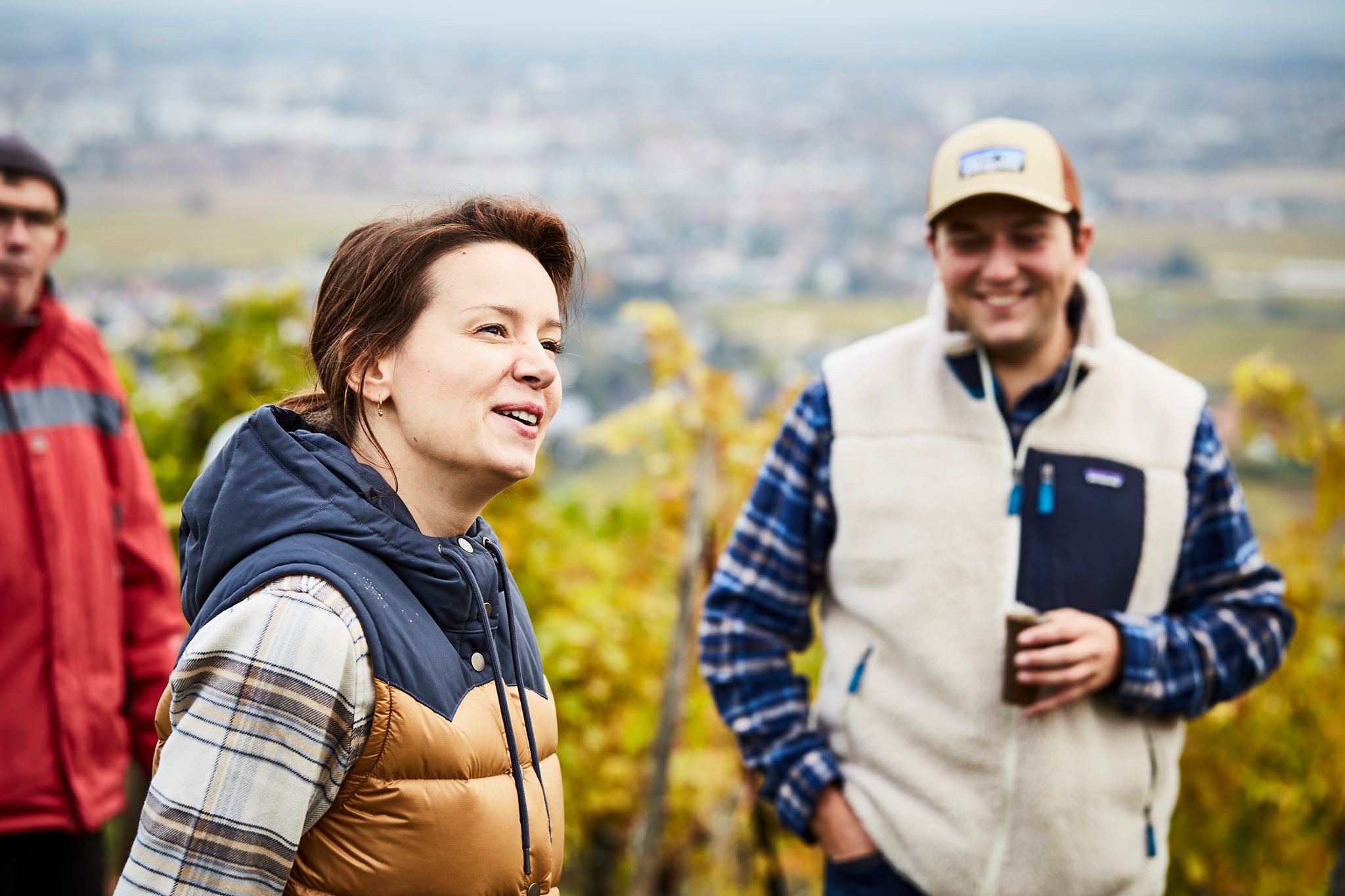 Region:
Region: -
Description:
Staffelter Hof first appears in texts from in 862 AD. At almost 1,200 years old, it is one of the oldest companies of any kind in the world. The vineyard holdings span 11.5ha (10.2ha planted) of diverse vineyards such as Paradies, Kirchlay, Letterlay, Steffensberg, and as far south as the Dhroner Hofberg. The winery itself is located in Kröv, a village in the heart of the middle Mosel on a sweeping 180⁰ curve of the river between the old, quiet winemaking villages of Wolf and Kinheim. This is not a hotbed of avant-garde creativity. Yet Jan Matthias Klein, a 7th generation winemaker at this estate, is doing something extraordinary here, crafting naturweine the likes of which have rarely been seen in the history of the Mosel.
Jan is a vital member of the Klitzekleine Ring, a group of about a dozen winemakers around Traben-Trarbach dedicated to saving steep slope Mosel vineyards that would otherwise be abandoned. In that sense, he is a conservationist. However, he is also a powerful innovator. After stages in France, New Zealand, and Australia, Jan came home and steered his family’s winery into quixotic efforts of viticulture being explored by the younger generation in the Mosel. His experimentations with non-German grape varieties (piwis, e.g.), alternative energy and water management at the winery, and other groundbreaking techniques to combat the inevitability of climate change, mark him as a visionary leader in the progressive German wine movement.
Jan’s farming on the steep slate hills of the area is strictly organic—practicing since 2011 and certified since 2014—which is a very hard and expensive commitment to make. It is far easier to spray pesticides from a helicopter, for instance, than to scramble up and down 60-70⁰ gradient slopes placing natural insect repellants on each and every vine. The hard work is an intrinsic part of the winery’s founding legend, however. Centuries ago, a donkey was originally the laborer of the steep slopes in Kröv until a wolf killed it. Legend has it that the monks caught the wolf and made it do the vineyard work after it killed the donkey. Wolf “Magnus” is still the mascot of the winery today (hence the labels and names).
It cannot be emphasized enough: these are not normal Mosel wines. They would be exceptional in ANY of the world’s winemaking regions, actually. Klein makes classic Rieslings under the Staffelter Hof label, but works with ZERO SULPHUR on this line of wines. They are unfined, unfiltered, hand-bottled, and contain varying levels of palate-tingling residual CO2. The variety of grapes is kaleidoscopic, featuring cuvees from Frühburgunder, Germany’s ruddy, blue/black-skinned “early Burgundy,” a.k.a. Pinot Noir Précoce, Sauvignon Blanc, Müller-Thurgau, Muscat, and a bewildering assortment of Portuguese grapes.
So… the wines are “out there.” But are they good?
Yes, they are rivetingly good; fresh in character, light on their feet (under 11%), joyful to drink if you don’t want to ponder too much about them and fascinating if you do. For those who think the pleasures of “glou-glou” and farm-to-bottle wines do not exist in Germany, these wines are a wake-up call and invitation.
BOWLER E-Zine Issue 1 | Q4 2020: Learning and Relearning German Wine
BOWLER E-Zine Issue 2 | Q1 2021: Conversation with Cellar Master, Yamile Abad - Weingut Staffelter Hof - Mosel, Germany
Image: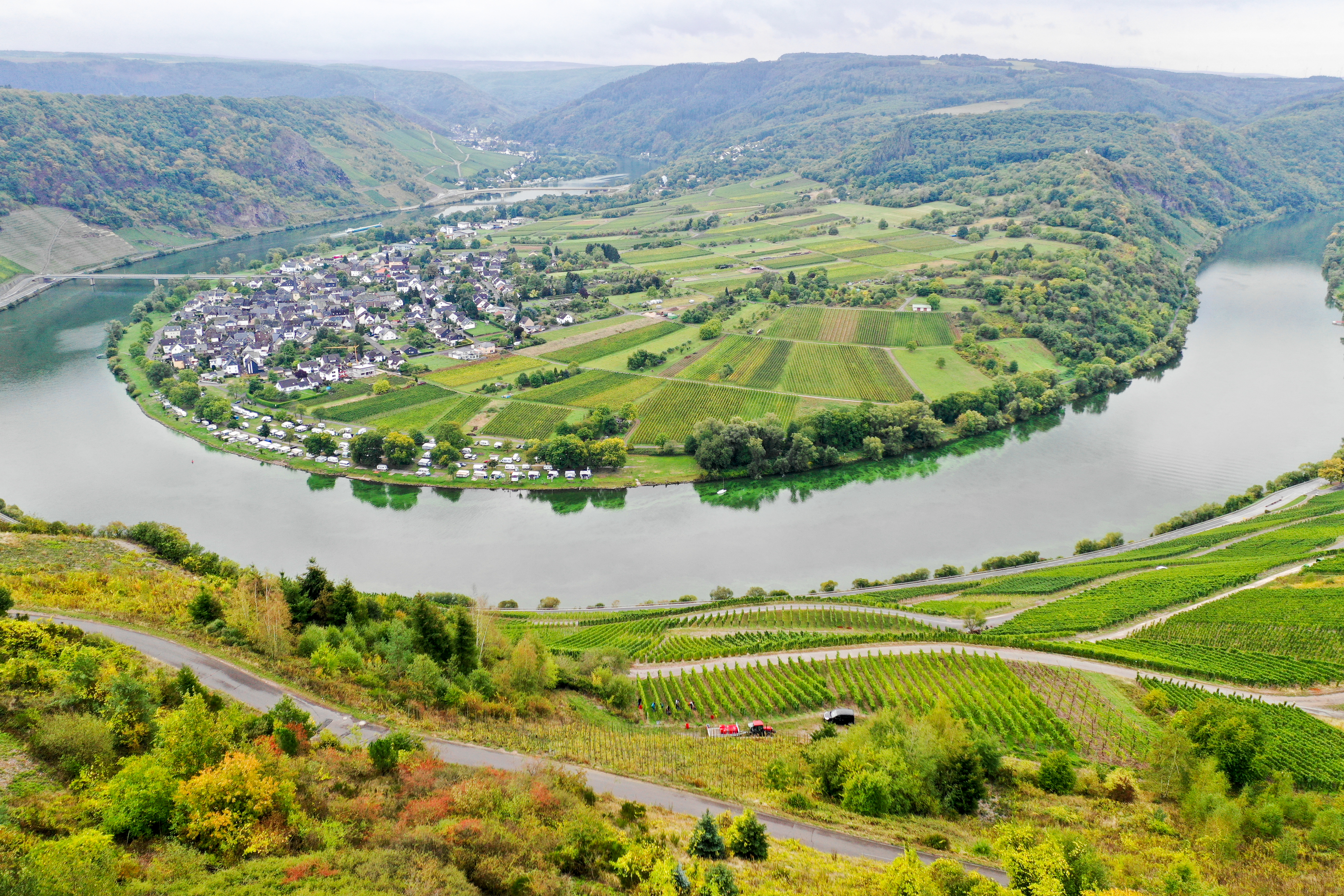 Region:
Region: -
Description:
This project began in 2012 as an inspiration to focus on the pure soul and terroir of the Uco Valley, specifically Gualtallary and Vista Flores.
The Michelini brothers, also winemakers at Mendoza’s renowned Zorzal and Passionate wineries, are creating their first biodynamic wines under the Calcareo and SuperUco labels. The outdoor winery consists of egg-shaped concrete amphoras in The Vines of Mendoza’s Winemaker’s Village project.
This boutique, biodynamic project is the first of its kind in Mendoza with very limited production of top quality, terroir driven wines.
The two hectare farm is planted in circles with 360 degrees of exposure to the sun. The different varietals are planted from the center outward, as its vegetative cycle dictates. Neal Martin (Wine Advocate) commented on the Michelini Bros. wines that “Their passion and commitment, their spirituality and, for want of a better word, “purity” in terms of doing what they do for the love of it rather than financial reward, brought to mind the Lopez de Heredia sisters in Rioja. If you want cutting edge, meticulously crafted Argentinean wines hot footed from one of the most exciting sub-regions (Gualtallary), then look no further.”
This profile and tasting notes were edited from the Brazos Wine website, along with the pictures used. For more information please visit: Brazos
Image: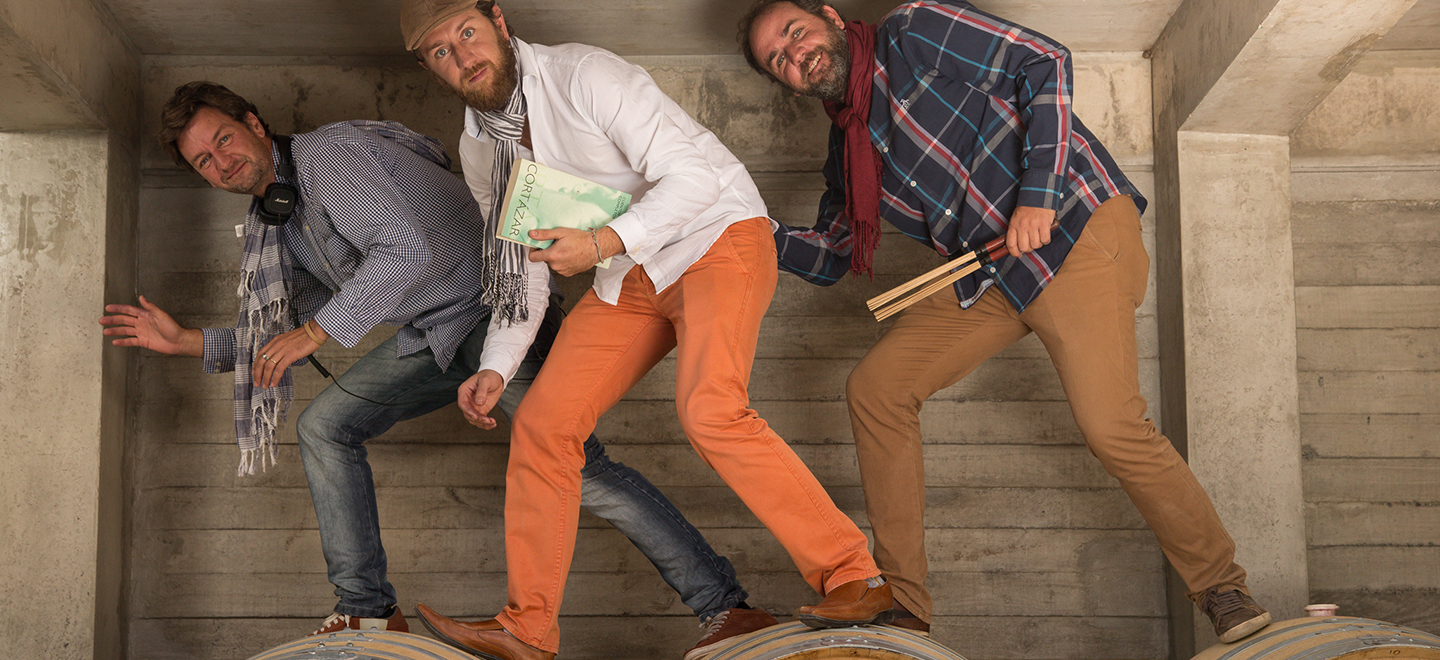 Region:
Region: -
Description:
Named for the beautiful flower that grows on Tenerife (which is also depicted on the labels), Tajinaste is run by the indefatigable Agustín García Farrais. He works alongside his parents, Cecila (“Chilla”) and Agustín Snr., who are both sevety years old going on thirty. The bodega was started by Agustín’s grandfather. They own three hectares in the Valle de la Orotava, and their oldest vines were planted in 1914. Many are trained on the very traditional method of ‘cordon trenzado’, or “braided cordon”, a method of training vines where their branches intertwine with each other creating a sprawling plant that grows on the ground. Historically vines were trained like that so that they could easily be moved and rearranged in order to allow other crops to be planted in the same plot.
Having trained in Bordeaux, Agustín is a precise winemaker. He vinifies each parcel separately, which has allowed him to get to know the character of each vineyard so well that he can masterfully blend extremely consistent and beguiling wines year after year.
Image: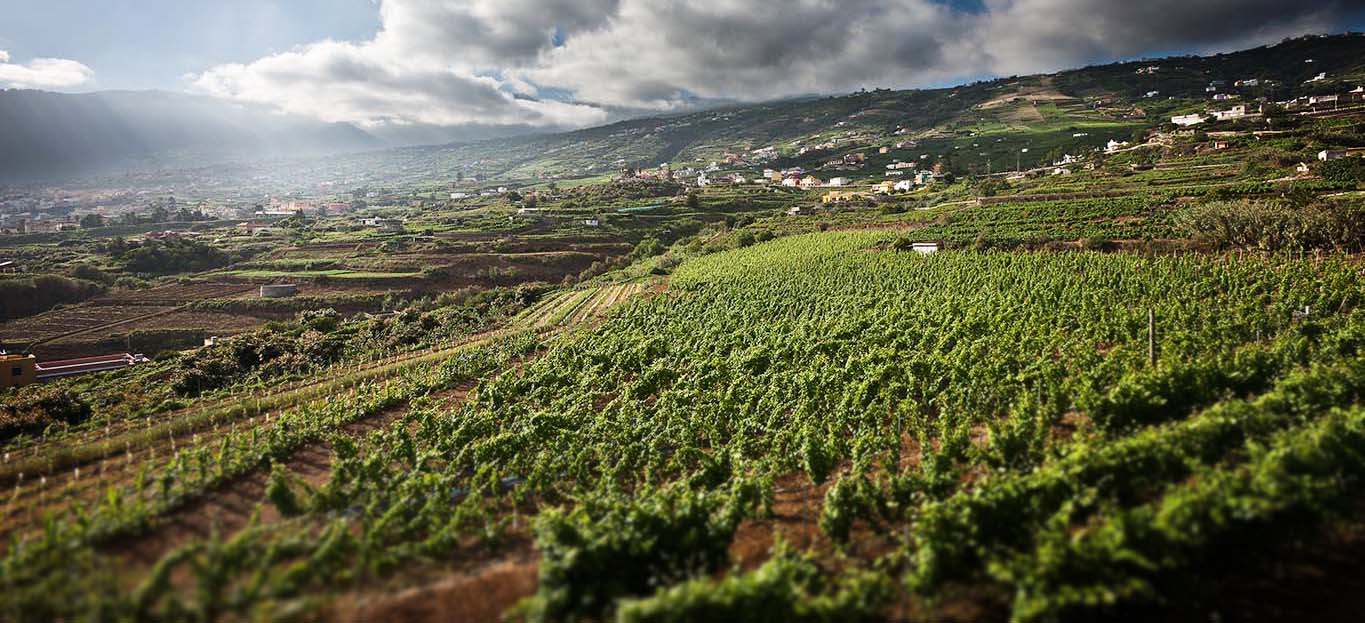 Region:
Region: -
Description:
Gideon Beinstock has become known for his amazing Clos Saron wines, but the history goes back much further than that. A long and winding road from growing up in Israel, an artist’s life of painting in Paris, helping to plant the Renaissance Vineyards in the 1970’s, international wine sales, and finally finding his way into winemaking at the very same vineyards he had planted almost two decades earlier. It was there at Renaissance that he began learning his craft and made the first of his incredible wines.
Gideon left Renaissance in the late 1990’s to found Clos Saron, just a few miles down the road, but has always felt a connection to Renaissance, both as a piece of his history, and also as a totally unique and special terroir.
Which brings us to the present: Gideon was given the opportunity to reclaim some of the greatest wines he made during his time at Renaissance! These wines have never left the winery and have been aging perfectly, undisturbed for the past two decades.
The cuvees that were hand-picked by Gideon are showing outstandingly right now, and should continue to age gracefully for years to come.
Notes from Gideon:
Pre-1995, like all self-respecting Cali wineries, Renaissance was producing an ‘Estate’ and a ‘Reserve’ Cabernet.
In 1995, I broke the Reserve down into three cuvées, with more specific expressions:
1. “Première Cuvée”, a varietal Cabernet Sauvignon (min. 75%), was meant to continue in the tradition of the older Reserve tradition of long lasting, powerful, blockbuster wines.
2. “Claret Prestige”, a non-varietal wine, was meant to be the most elegant, aromatically complex, harmonious wine we could achieve every vintage by the blending of (mainly) Bordeaux varieties.
3. “Vin de Terroir”, 100% varietal Cabernet Sauvignon, selected every vintage from (either the same or any) specific micro-site in the vineyard for its clearly distinctive expression of terroir.
The names we chose for the Taken From Granite wines are related to the original stylistic goal of each cuvée:
-“Village” is the ‘Estate’ made from all the various slopes combined.
-“Soleil" is the “Première Cuvée”
-“Élegance" is the “Claret Prestige”.
About 400 cases of each was produced every vintage between 1995 and 2002 (with a few exceptions). All the grapes for these wines came from a few vineyard sites (we referred to them as ‘slopes’), which were determined as the best we had (our “Reserve Slopes” - mainly Slope 1, 16, and 21).
***The “Vin de Terroir” may or may not appear under the TFG label, as of now it is unreleased and TBD***
Image: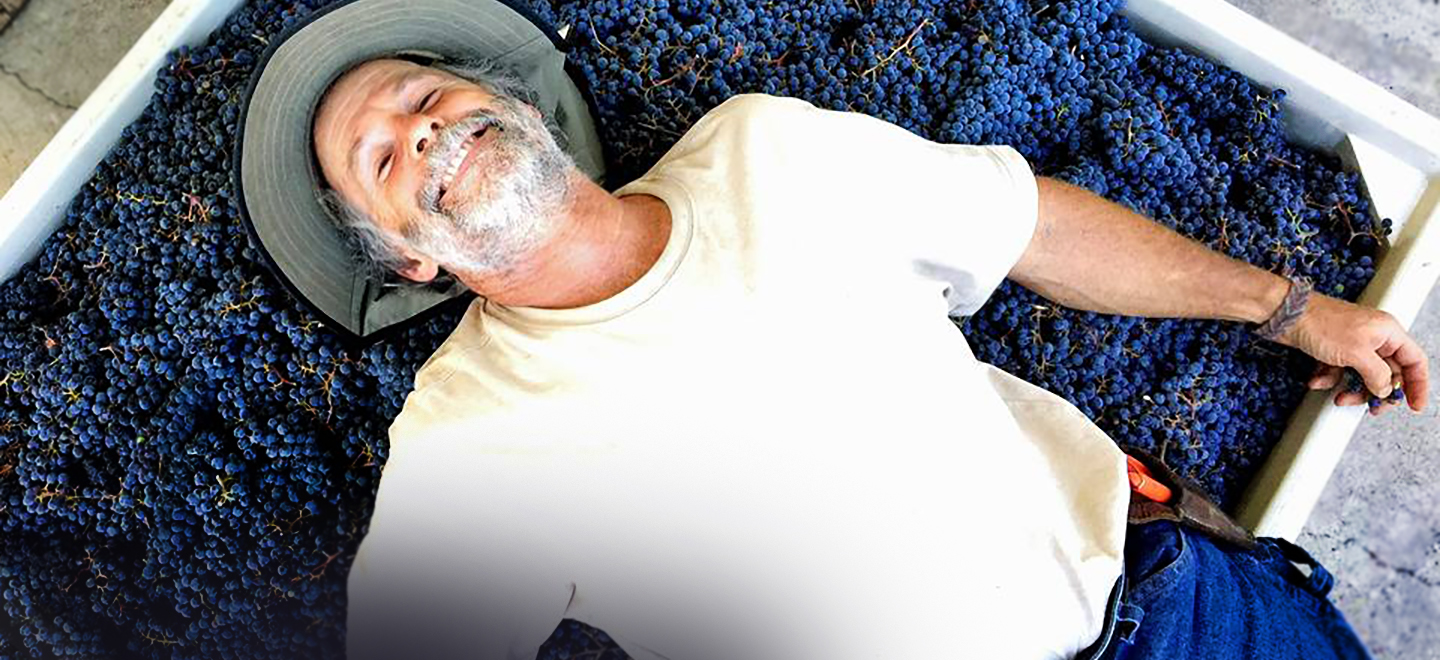 Region:
Region: -
Description:
Thank you to importer Louis/Dressner for this profile of the Tarlant estate:
(Click here for more on Tarlant on the Louis/Dressner website)
In 1687, Pierre Tarlant began cultivating his first vineyards in Aisne. The family stayed put for almost 100 years before moving to the village of Oeuilly in 1780. At the turn of the 20th century, Louis Tarlant took over as head vigneron. His tenure would prove instrumental to shaping the family legacy, principally due to his involvement as mayor of Oeuilly in the rarely discussed Champagne Revolution, a tumultous movement that you have probably never heard of. Let us explain.
By the early twentieth century, it had become increasingly common for the big Champagne houses, who even then had a strong-hold on commercialisation, to bring in fruit from all over France and even different countries (the farthest being Portugal!) to vinify and sell the wine as Champagne. When this became common knowledge amongst growers in the region, many were infuriated that such practices could be happening right under their noses. Through rigorous organisation, many villages managed to block off the points of entry of outside fruit, as well as skillfully organizing themselves to codify the Champagne region. As a result, Louis helped achieve worldwide recognition of the AOC in 1911 and contributed to the establishment of the AOC Champagne region in 1927.
In the aftermath of these events, Louis swore never to sell a single grape to the big houses again, making Tarlant one of the first independent estates in the region (less than 10 existed at the time). Fast forward to today, and head vigneron Benoît Tarlant is the 12th generation working the land under his family name. Benoît is the real deal: his great understanding and respect of history, tradition and nature, coupled with his experimental, forward thinking tendencies have been the driving force of some truly next level, terroir-centric Champagnes. With his sister Mélanie joining the family business in 2003, things are more than ever a family affair.
The estate consists of 14 hectares of vines within 31 lieu-dits of Pinot Noir (50%), Chardonnay (30%) and Pinot Meunier (20%), along with small amounts of Champagne's "forgotten"grapes" - Pinot Blanc, Arbane and Petit Meslier. From empirical observation, Benoît and Mélanie have singled out 63 parcels that they vinify individually each vintage, permitting unparalled precision in blending decisions for base and reserve wines, but also letting them highlight single vineyard expressions of their land.
In the vines, chemicals are never used and biodiversity is prioritized. Because of the Marne's extremely diverse terroirs, Benoit adapts his viticultural approach parcel by parcel, using the soil, grape and micro-climate to guide him. While only contact treatments have been used for the past two generations, Benoît and Mélanie have decided to work towards organic certification.
"Our father fought for grass in the vines and to stop have garbage from cities being thrown in the vines as a fertilizer. It took five years. That was his fight. Organics seems like the challenge of our generation."
In the cellar, the grapes are gently pressed and racked by gravity to Burgundian barrels, where each parcel ferments and ages individually. Malolactic fermentation almost never occurs but is not blocked: Benoît feels that through careful pressing, attention to temperature and the correct viticultural practices, Champagne's naturally cold climate gives them grapes with low PH and high acidity, a combo that does not incite malo. Sulfites are are only added in microscopic doses at press and intermittently to casks of reserve wine. The wines are never filtered:
"“Disgorgment is sort of like a filtration. If you’re going to take the time to do long élevages and letting the solids deposit themselves, you don’t need to filter. It requires a respect of the rhythm of the wine."
The big particularity of the Tarlant Champagnes, a tradition started by Benoît's father Jean-Mary in the late 1970's, is that the vast majority of the production (90%) is bottled without dosage. While the idea of Brut Nature Champagne has slowly but surely gained momentum since the early 2000's, this was unheard of at the time. Still, Jean-Mary stuck to his guns and over time this has defined the Tarlant style. In such, the house's entry level cuvées are named "Zero".
Representing 70% of the total production, "Zero" is the Tarlant's calling card and consists of a non vintage, no dosage wine made equal parts Pinot Noir, Meunier and Chardonnay. "Zero Rosé" is a majority of Chardonnay with a bit of still Pinot Noir for color. For an entry level wine, a huge amount of thought is put into its creation:
"Zero is a reflection of the four villages we work in and the goal is to express a Champagne without the external sugar masking the land's characteristics.”
To achieve this, Benoît and Mélanie rigourously taste through each micro-vinification to pick which will serve as the base wines with the innate knowledge that they will be released five to seven years later. These will be aged until the spring after harvest then blended with reserve wines before an extended period sur lattes. The remaining vinifications are blended into reserve casks for future use.
“We don’t buy or sell grapes. We have to work our vines the best we can to have the best wine. "
Single vineyard cuvées -a rarity in Champagne- are also bottled. "La Vigne Royale" is from a vineyard of Pinot Noir originally worked by Benoît and Mélanie's maternal grandfather in Celles-lès-Condé at the confluence of La Dhuys and the Surmelin rivers. Historically, it was a terroir favored by the Bourbon kings, hence the name.
"La Vigne D'or" is a Blanc de Noirs from a parcel of Pinot Meunier planted in the sparnatian clay of the Vallée de la Marne. The vines are 65 years old and planted by Benoît and Mélanie's paternal grandfather, Georges Tarlant.
"La Vigne d'Antan" is 100% ungrafted Chardonnay from the lieu-dit "Les Sables". The name Antan essentially means "yesteryear", a reference to the historical roots (pun intended) of this franc de pied bottling.
"Cuvée Louis" is Benoît's homage to his great, great grandfather mentioned above and the top of the top from Tarlant's single vineyard offerings: Chardonnay and Pinot Noir from a single parcel of 65 year old vines (originally planted by Louis himself!) called Les Crayons, vinified and aged in oak.
Vintage releases have also joined the lineup in recent years. These wines are meant to capture a snapshot of the years' characteristics by blending specific parcels that best reflect it. Each year has a different name ("Étincelante", "La Matinale") and so far the wines have aged for well over a decade sur lattes before release!
Image: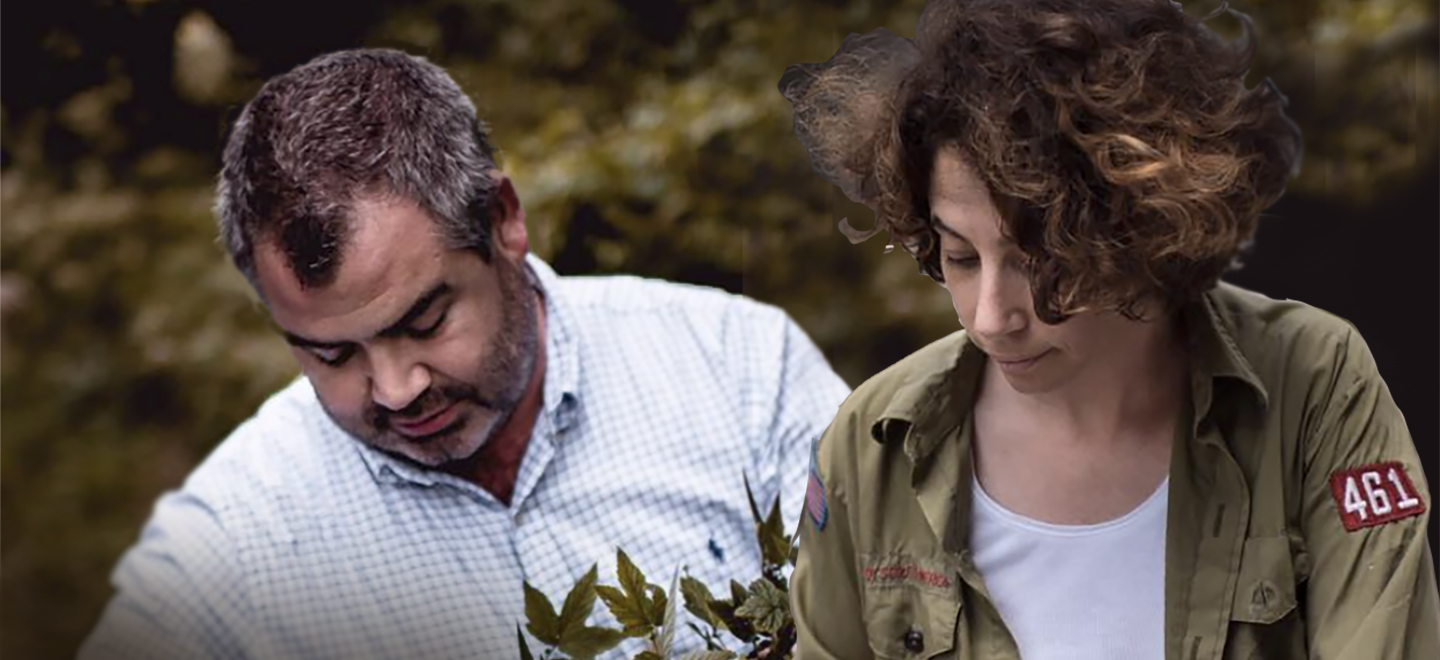 Region:
Region: -
Description:
Family owned Teerenpeli Distillery was established 2002. Owned by Anssi (CEO) and Marianne Pyysing It was situated in the same building with Restaurant Taivaanranta in the city centre of Lahti, Finland. The larger main Teerenpeli Distillery is located with the brewery outside Lahti City center. Established in 2015 this largest distillery in Finland produces up to 160 000 litres per year.
Teerenpeli uses traditional pot-stills, handmade in Scotland. The spirit is matured in oak casks for at least three years, as required by law. At the moment different sizes of sherry, bourbon, port and rhum casks are used. These casks come directly from Scotland, USA, Spain and Portugal.
Teerenpeli Whisky has got character of its own from the best lightly peated Finnish malt and fresh ground water. The water used in the production: we use clear and fresh local ground water, which is filtered through the Salpausselkä esker, a gravel ridge, formed by the ice age about 10 000 years ago.
To produce our lightly peated new make (5 ppm) we use 87% pilsner malt and 13%, heavily peated malt. Pilsner malt comes from local malting company in Lahti, Finland. The malting barley used is grown within 150 km of Lahti. Heavily peated malt comes from Scotland and is dried (kilned) with Scottish peat. Wort is fermented with special whisky yeast for 72 hours and the end product (wash) is around 8% ABV. Copper pot stills produced by Forsyths (Scotland) for Teerenpeli ’s own design specifications are used for the distillation. The distillery operates 3 000 l wash still and 2 x 900 l spirit stills. These are also heated with our own wood pellet burner. All Teerenpeli whisky casks are matured minimum of 3 years in the casks as required by the EU. Forty foot ex-reefer sea containers are used mainly for maturation. No heating or cooling is used, which lets the Finnish weather affect the maturation.
Image: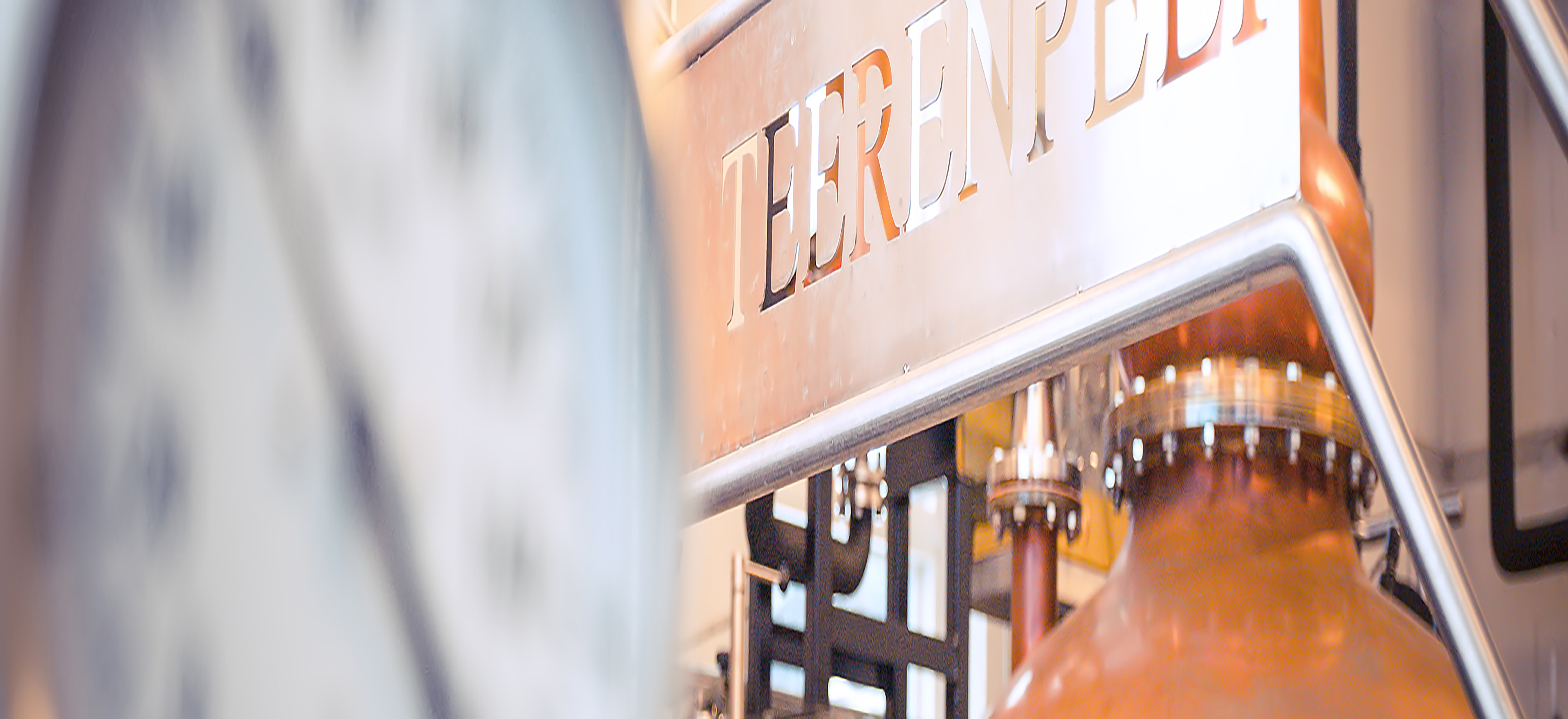 Region:
Region: -
Description:
Armin Tement happily joined his family winery in Sudsteiermark (South Styria) in 2005. His father, Manfred Tement, had over time, firmly established Weingut Tement as a benchmark producer for Styrian Sauvignon Blanc and Morillon. Manfred was one of the founders of STK (Styrian Terroir and Klassik Wine growers association) in 1986. STK was established because there were no government regulations established at the time for making fine wine in the region. Manfred preferred Sauvignon Blanc to the most widely planted and highly productive Welschriesling. It was a big step to prioritize quality over quantity and eventually in 1991, Tement was recognized by the German magazine, Der Feinschmecker, for making the ‘world’s best Sauvignon Blanc’, essentially putting Tement and this small winegrowing region on the international wine map.
When Armin joined in 2005, his goal was not only to make an unequivocal Styrian wine, but also a wine that expresses, in his words, ‘Tement’s own style”. With the support of the family, Armin began following organic agriculture, eventually converting all eighty hectares over the next ten years and becoming certified organic in the 2018 vintage. South Styria gets a lot of rain and incredibly, Armin, Stefan, and Manfred have converted all of their sites to biodynamic agriculture, 2022 is the first vintage certified biodynamic by both Demeter and Respekt. There are three main weather influences that are a part of the terroir here: the Adriatic Sea to the south brings storms and rain, the Pannonian Plain brings hot and dry weather, and the Alps bring cool air at night.
Styria is one of the three major growing regions in Austria and it’s the smallest with 4,633 hectares planted. The subregion of Sudsteiermark, or South Styria, covers 2,563 hectares and it lies on the border with Slovenia. Styria is quite different from the rest of Austria as the main white varietal is neither Grüner nor Riesling, but Sauvignon Blanc! Other white varieties also do well here, notably Gelber Muskateller, Pinot Blanc, and Morillon, the local name for Chardonnay. In Sudsteiermark, the wines are categorized by quality level, with regional wines at the entry level, village wines are a step up in quality and represent the terroir of the village, and the single vineyard wines are the pinnacle. All of the wines are labeled “Sudsteiermark DAC”. Tement makes wines from three villages, Ehrenhausen, Gamlitz, and Kitzeck-Sausal. And the highest quality wines are single vineyard sites which are designated either Erste Lagen or Grosse Lagen, the equivalent of premier cru or grand cru. The most famous site in Sudsteiermark is Zieregg where both Sauvignon Blanc and Morillon are planted.
Tement is specialized in making exceptional single-vineyard wines, but the flagship is the regional Sudsteiermark Sauvignon Blanc “Kalk & Kreide”. It is a blend from fifty sites and the name describes the main terroir, limestone and clay. Like all of their wines, the grapes are harvested by hand, undergo a maceration of twelve to twenty-four hours and then fermentation happens spontaneously with indigenous yeasts in stainless steel. “Kalk & Kreide” is aged on the lees for six months before release. All of the wines are spontaneously fermented and are made without any sulfur during vinification or aging. They only get a little sulfur one month before bottling, allowing the wines to get a full expression of their site. The single-vineyard wines are fermented and aged in large neutral oak barrels for eighteen to twenty-four months and are bottled without filtration. Some wines do not get sulfur for more than 24 months, and yet the single-vineyard wines are incredibly precise and express their terroir brilliantly.
Over the last fifteen years, the gradual changes taking place have garnered a lot of attention, but it’s worth noting that the whole family is involved. Armin works with his brother, Stefan, who joined him in 2010. His father is still working as well, although Armin officially took the reins in 2008. Armin’s wife, Monika is also involved in keeping everything running smoothly. And Armin’s mother runs the recently established B and B. All that Weingut Tement has accomplished in the last fifty years is incredibly impressive and it's made it not only one of the most important wineries in South Styria, but also in Austria. Tement has become an icon in South Styria and Austria and the accolades are well deserved. Bowler is incredibly honored to represent the Tement wines in the United States.
Image: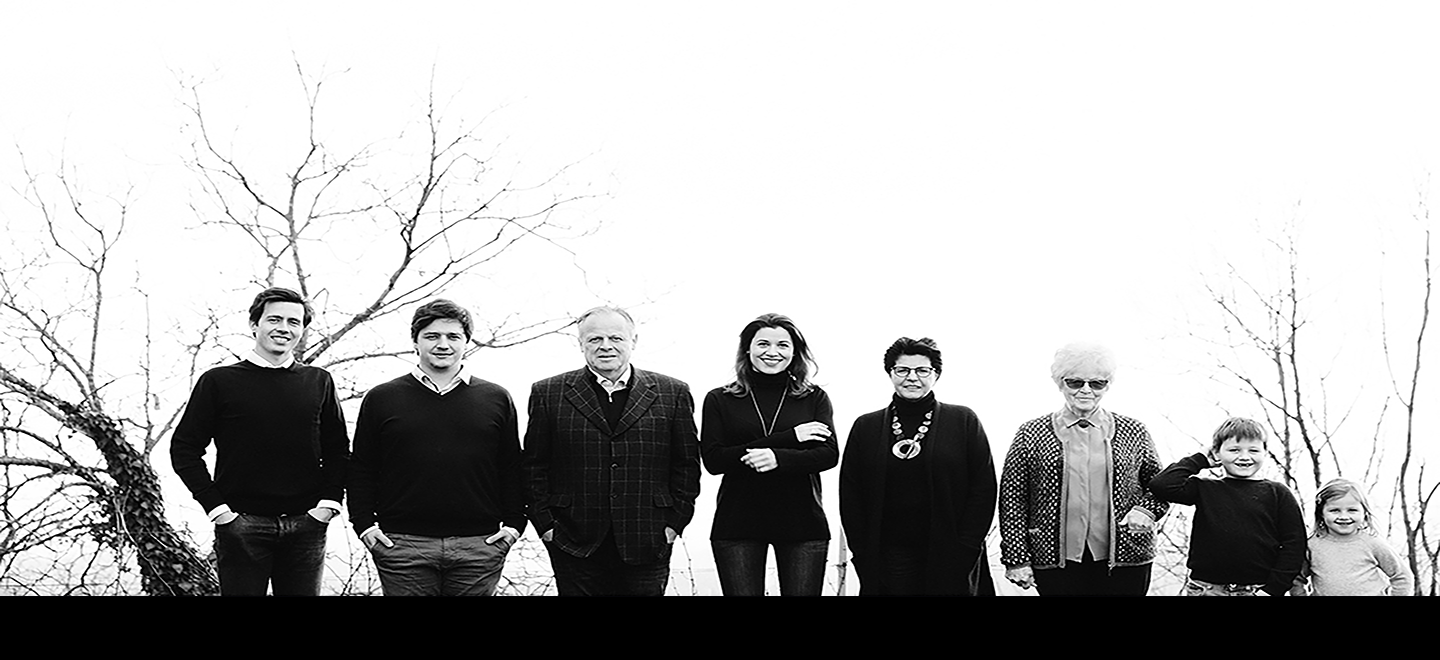 Region:
Region: